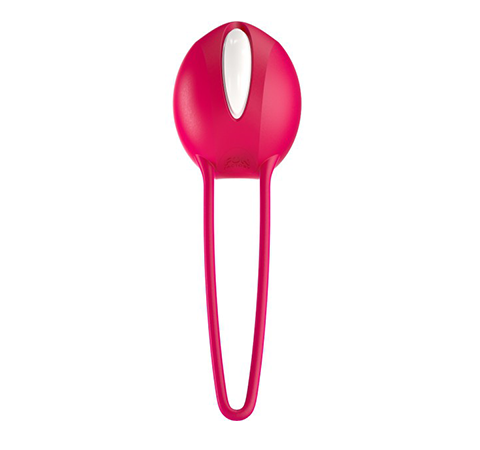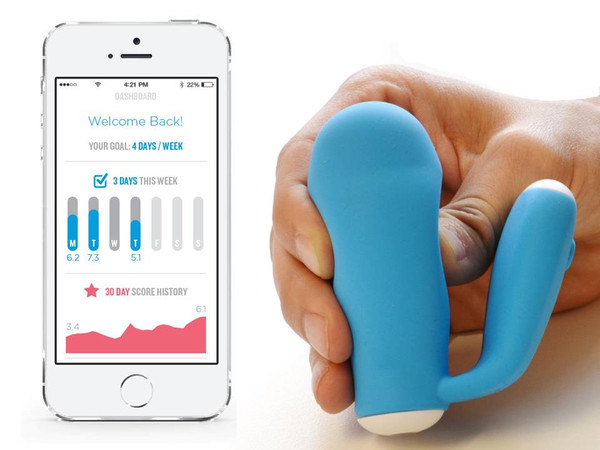Kegel muscles, where they are and how they develop
Tips / / December 19, 2019
In 1948 gynecologist Arnold Kegel, upset by the inefficiency of operations for the treatment of urinary incontinence women, modern medicine for the first time in history spoke of the importance of strengthening non-surgical pelvic bottom. "Kegel muscles", as they are now often referred to support the uterus, bladder, rectum and small intestine - to put it mildly, an important part of the anatomy.
The tone of the pelvic floor muscles is reduced:
- time (these muscles, like any other, weaken with age);
- pregnancy and childbirth;
- abdominal surgery, including caesarean section;
- obesity.
Kegel exercises can help in the following cases:
- stress incontinence (e.g., during the time of coughing, sneezing, running, lifting weights);
- Urge incontinence - when the urge to empty the bladder is so strong that you do not have time run to the toilet (not to be confused with urinary incontinence due to overflow of the bladder, then exercise powerless);
- weakening of the pelvic floor muscles after childbirth, which may, in addition to the above symptoms, call the omission of one of the pelvic organs such as the uterus.
FAQ
How to feel the proper muscles?
Try to stop the stream during urination. If happened, congratulations, you have found the Kegel muscles.
And if not?
Maybe you're just too want the toilet to hold back so (if not, it is quite alarming, run to the gynecologist). As an alternative method, try entering a clean finger into the vagina and squeeze it. If all goes well, you will feel lifting the pelvic floor.
And yet?
Well if so you are not interested, carry out a test drive with your favorite: during sex, try to squeeze his penis inside yourself and ask whether he feels that you clasps it tightly.
Do I need to exercise it when you urinate?
Not. On the contrary, it is contraindicated, can aggravate the symptoms or even cause pain.
How to prepare for the exercises?
Empty the bladder, and you're ready.
There are other nuances?
You know how when bent index finger, others too little bent? So, there is a similar thing with the Kegel exercises: your glutes and abdominal muscles can tighten automatically. Try to control this point. During stress the pelvic floor muscles rest should ideally be relaxed: so you will avoid over-voltage and spasms.
How to train?
Take a comfortable position: sitting, lying or standing (but not while walking). Strain the desired muscle as hard as possible for 5 seconds, then relax. After a brief pause, repeat. Do 10 of these approaches. Do not forget to breathe, otherwise you will quickly get tired and the benefits of exercise will decrease.
How long and how often should I exercise?
Studies show that the first effect you can feel after 4-6 weeks of regular training for two or more times a day.
The million: my orgasm will be stronger?
Quite possible. Studies support this without a shadow of doubt, alas, not (the study of the female orgasm problem at all), but many Member surveys on the effectiveness of Kegel exercises claim that the duration and intensity of their orgasms increased. In this easy to believe, because the training of the pelvic floor muscles accelerates the rush of blood to the perineum, especially during arousal. Your orgasm is not exactly hurt. In addition, you will please her man more narrow and tight vagina. Win-win, as they say.
little helpers
In addition to "analog" way to develop muscles, Kegel, you can include special training balls-weighting, which will make the exercise harder and more efficiently. Great choice, here for example:






At the balls is only one problem - the lack of feedback: hard to maintain motivation, if there is no visual result.
Sam Arnold Kegel in the forties of the bulky device used a rubber bladder and tubes to measure the strength of muscles during exercise. Now, when interest in the topic last is booming, there were some very nice modern and unique.



Soon the Layfhakere will review one of these devices. What do you think of it? You would have bought such a thing? Tell us whether you are engaged in training of the pelvic floor muscles and the results achieved?



